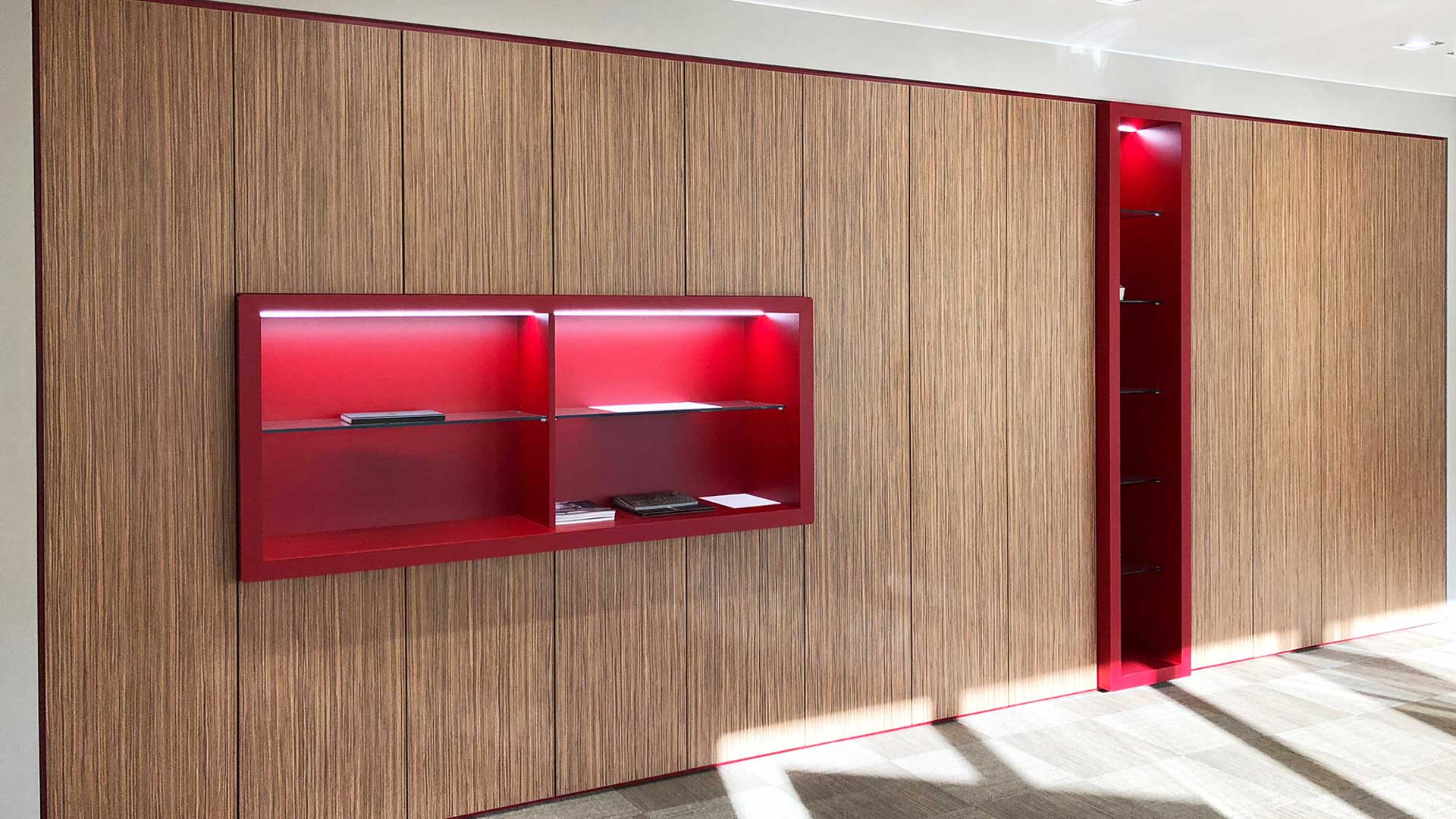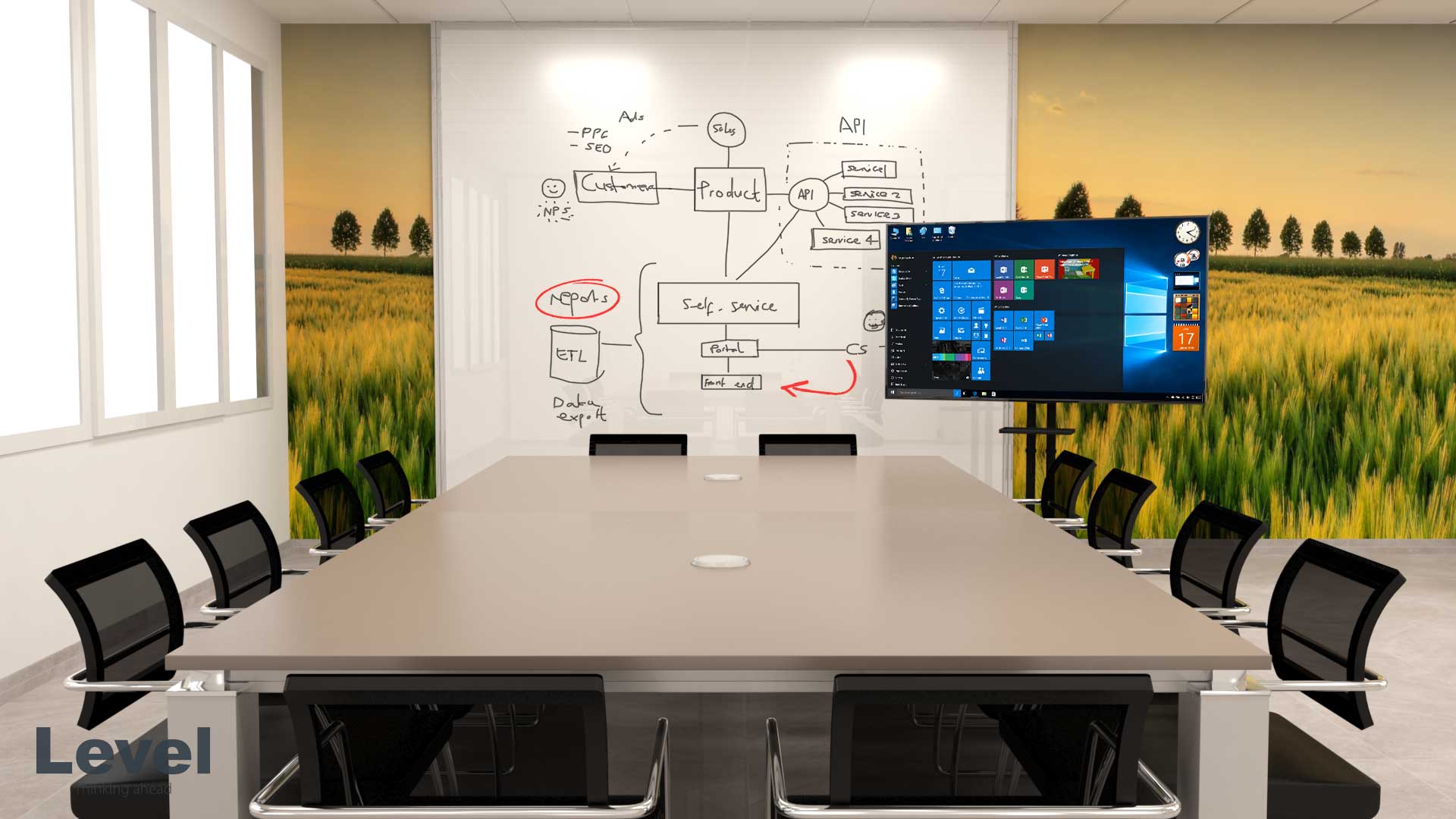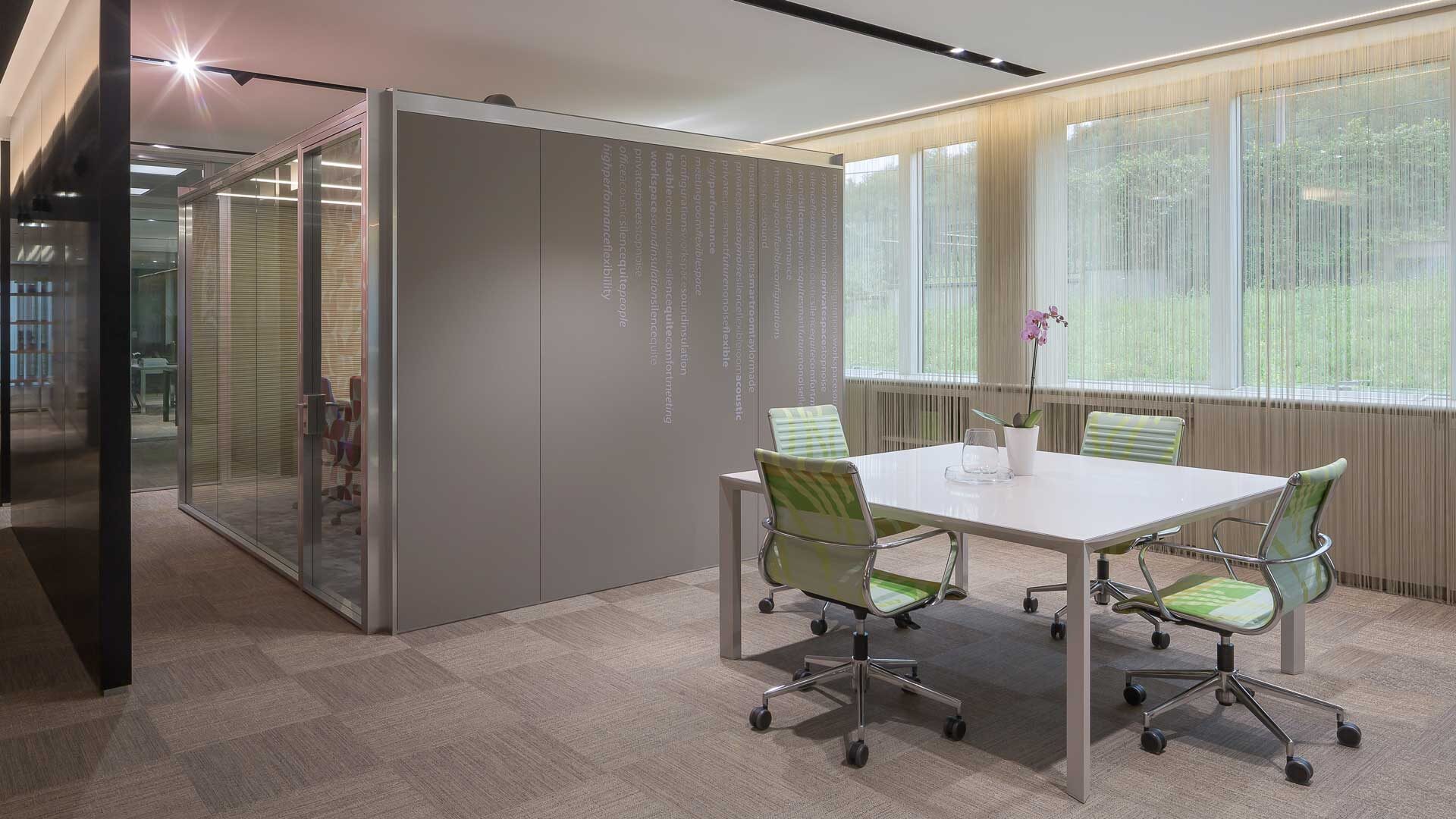What role does the modular wall play in today’s office space organization? Partition walls have evolved far beyond simply dividing spaces; they are now essential flexible and functional design elements. Here are the benefits of using multifunctional partition walls in the workplace.
How Office Elements Are Changing
The rise of activity-based working, the prevalence of open-space layouts, and an increasing convergence between professional and private life have led to hybrid solutions in office design. Modern workers are less tied to a “fixed desk” and are more inclined to move around the office depending on the tasks at hand, prompting changes in spatial layouts. Partition walls have adapted from simple dividers into multifunctional elements.
The New Role of Multifunctional Partition Walls
In open spaces resembling cozy living rooms, where sofas and armchairs coexist with desks and chairs, meeting tables and designer storage units have a residential feel. Both solid and glass partitions are part of this trend, defining private offices, phone booths, and huddle rooms with innovative materials and technologies. Multifunctional partition walls come in various types, all ensuring efficient use of space in the office.
How Many Types of Multifunctional Partition Walls Are There?

Partition walls now do more than just separate spaces; they can also contain, display, and even soundproof. When equipped with storage (open or closed), they help keep workstations organized, freeing them from personal items and documents, which enhances flexibility by allowing employees to choose where to work. Solid partitions with modular profiles can be fitted with shelves, storage hooks, coat hangers, and document trays.
Additionally, with Covid-19, having desks occupied solely by computers while everything else is stored in built-in cabinets or lockers ensures a cleaner workspace at shift changes, allowing for quick evening sanitization.
Freestanding partitions are used in open spaces for more flexible division, or they can integrate with structural elements like walls to complete the existing layout. Glass partitions in conference rooms or small meeting areas can even include whiteboard modules for writing. Double-glazed versions can incorporate manual or electric roller blinds or slatted blinds to visually isolate spaces when needed.
Smart Multifunctional Partition Walls

There are also more “smart” options, such as glass partitions with LCD film that switch from clear to opaque at the click of a button, widely used in meeting rooms or executive offices. Equipped with a projector, multifunctional partition walls can become projection surfaces—ideal for presentations.
Partition walls designed for huddle rooms, small enclosed spaces perfect for quick meetings, are made from high-performance sound-absorbing materials, or micro-perforated and slatted wood engineered to absorb sound and reduce reverberation. Lastly, partition walls can be clad with vertical greenery, adding a natural element to the office that enhances employee well-being.
Modular Walls and New Hybrid Systems

The hybridization of office spaces, increasingly seen in corporate headquarters, has driven the development of new modular wall systems that function as true multifunctional partition walls. Level Office Landscape’s Ever Evolving System serves as both a storage solution with hinged or folding doors and a partition for functionally distinct areas. Its design strikes a balance between protruding volumes and open spaces that become seating areas, bookshelves, or open compartments.
Ever Evolving System modules come in various widths (45-50-90-100 cm) and two depths (35 and 45 cm, with 60 cm options for kitchen and wardrobe functions), while heights range from 200 cm to full ceiling height. A key feature of this system is the ability to add character to the space through bold color accents, distinguishing different sections and marking thematic zones.
